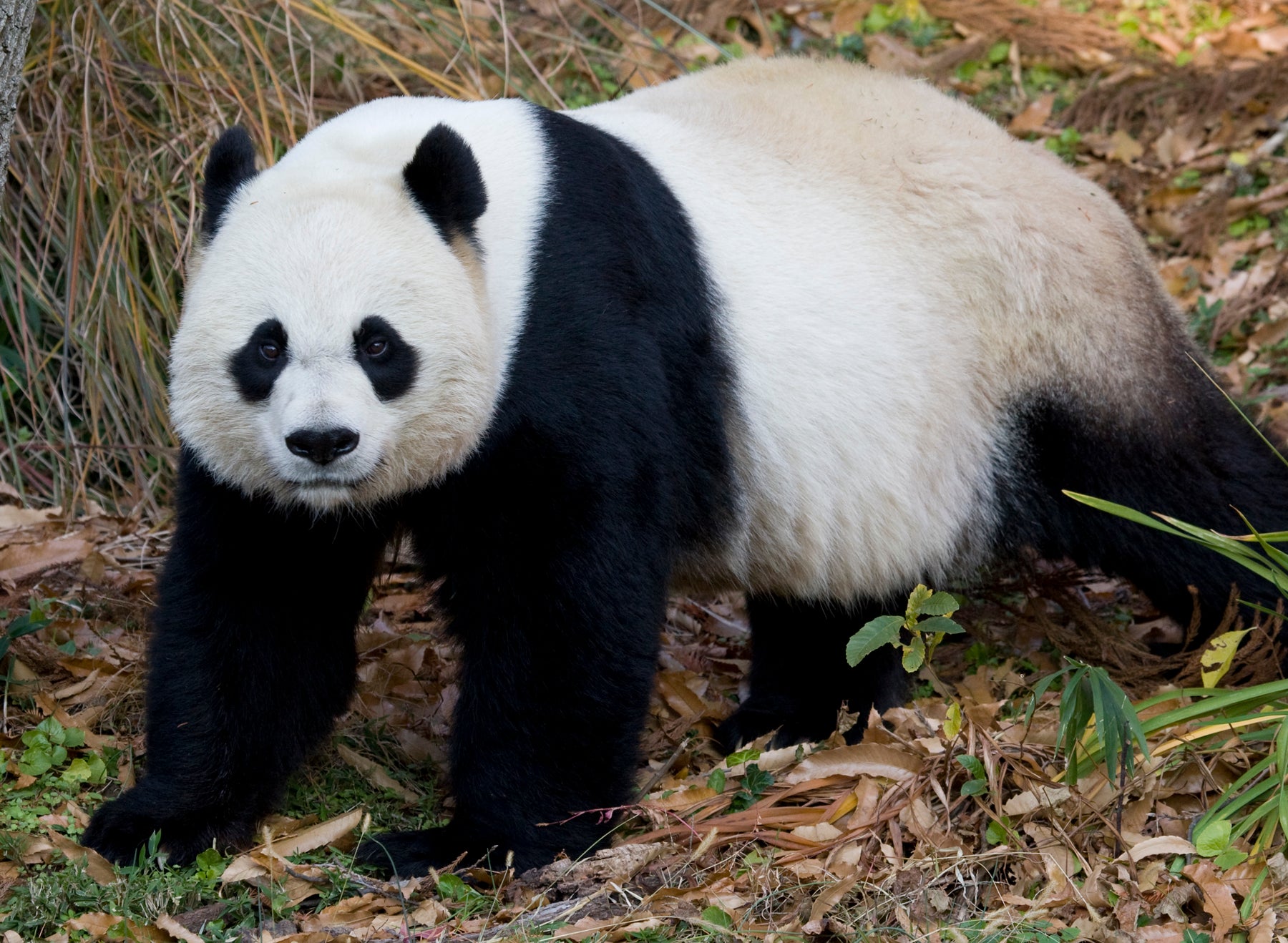Smithsonian’s National Zoo Hosts Panda Palooza: A Giant Farewell, Sept. 23 to Oct. 1
Giant Pandas Will Return to China by Early December

The Smithsonian’s National Zoo and Conservation Biology Institute (NZCBI) will celebrate its three giant pandas before the bears depart for China later this year. Visitors are invited to join the Panda Palooza, a nine-day onsite and online series of events in honor of 25-year-old Mei Xiang (may-SHONG), 26-year-old Tian Tian (tee-YEN tee-YEN) and 3-year-old Xiao Qi Ji (SHIAU-chi-ji) from Sept. 23 to Oct. 1.
Giant pandas Mei Xiang and Tian Tian, who arrived from China in 2000, and their four surviving cubs Xiao Qi Ji, Bei Bei (BAY-BAY), Bao Bao (BOW-BOW) and Tai Shan (tie-SHON), have created a living legacy of fans that spans multiple generations and countries.
“Millions have connected with and grown up loving Mei Xiang, Tian Tian and their cubs by visiting us in Washington, D.C., and watching our Giant Panda Cam,” said Brandie Smith, the John and Adrienne Mars Director of NZCBI. “Caring for one animal and its future is the beginning of caring more deeply for the natural world and our place in it. Although this farewell is bittersweet, we must celebrate these bears and their impact on fans and on our understanding, care and conservation of their species.”
During Panda Palooza, made possible with the support of The Boeing Company, guests can celebrate onsite at the Zoo and tune in online to the Giant Panda Cam for special moments. During the nine-day family-friendly celebration, visitors can dive into free panda-themed fun, supported by entertainment partner Events DC, including hashtag-worthy photo backdrops, hands-on arts and crafts, 'Kids Area’ in the Great Meadow with a soft play section; chalkboard, coloring and stamping activities; morning family stretching and yoga along with panda talks, temporary tattoos, conservation-themed scavenger hunt, live music concerts on the Mainstage by Lion Tiger Hill and free film screenings of "Kung Fu Panda" and "The Miracle Panda" in the Visitor Center Theater. In addition, fun activities, a calligraphy station and tasty celebratory treats will be provided courtesy of the Embassy of the People’s Republic of China. National Zoo Members will have a designated hang-out area on the Panda Overlook with giveaways. Zoo food and beverage vendors will offer panda-themed items. Details on the events are available on the Zoo’s website and will continue to be updated. Free passes are required and can be obtained on the Zoo’s website.
NZCBI’s giant pandas are symbols of global collaboration that have left an indelible mark on generations of Washington, D.C., residents and visitors alike. Panda fans are invited to share their experiences with all of the remarkable bears throughout NZCBI’s history. Guests can submit their memories and photos via NZCBI’s website. Select memories will be shared by the Zoo online.
Mei Xiang and Tian Tian arrived in Washington, D.C., in 2000, the second pair of giant pandas to live at the Zoo. Their first three surviving cubs Tai Shan (b. 2005), Bao Bao (b. 2013) and Bei Bei (b. 2015), are thriving in China. Tai Shan and Bao Bao have even welcomed cubs of their own. With the birth of Xiao Qi Ji (“Little Miracle” in English) in 2020 when Mei Xiang was 22 years old, Mei Xiang became the oldest giant panda to give birth in the United States and the second oldest documented in the world. Xiao Qi Ji’s birth was the first outside of China from artificial insemination with frozen-thawed semen only and demonstrates the value and key role of systematic biobanking in species conservation.
Giant pandas at the Zoo have been part of long-term studies on husbandry, nutrition, behavior, genetics, veterinary medicine and reproduction. The Smithsonian’s work to understand reproduction increased the likelihood of pregnancies in giant pandas under human care and has served as a model for the management of other rare and endangered species. Breeding and veterinary research on Mei Xiang and Tian Tian has provided critical data for managing and growing healthy populations of this species in human care and valuable insights for the conservation of wild populations.
From births and first steps to munching bamboo and playtime in the snow, NZCBI’s Giant Panda Cam has connected fans across the world to amazing moments featuring Mei Xiang, Tian Tian and their cubs. Since its launch, the Giant Panda Cam has had 100 million page views. In 2020, at the height of the pandemic, more than 639,000 people tuned in to watch Mei Xiang give birth to Xiao Qi Ji. The Giant Panda Cam will go offline after NZCBI’s giant pandas’ departure to China.
NZCBI entered into its Giant Panda Cooperative Research and Breeding Agreement with the China Wildlife Conservation Association in December 2000 when Mei Xiang and Tian Tian arrived at the Zoo. As part of the terms of the current agreement, Mei Xiang, Tian Tian and their cub, Xiao Qi Ji, will return to China by Dec. 7. While the 2023 departure closes a major chapter of an international animal care and conservation success story, NZCBI remains committed to continuing its efforts to secure and safeguard a healthy future for giant pandas.
For more than 50 years, NZCBI has led one of the world’s foremost panda conservation programs. Collaboration between Chinese colleagues and NZCBI’s team of animal care staff, scientists and researchers has been the cornerstone of those efforts. Working together, these conservationists have made significant contributions to the global knowledge of giant panda biology, behavior, reproduction, health and habitat. Joint programs to train the next generation of skilled research and animal care professionals ensure that giant pandas continue to thrive in human care and in the wild for generations to come. The unified effort to create and share knowledge is saving this species from extinction. Giant pandas are no longer on the endangered species list and are now classified as “vulnerable” in the wild by the International Union for Conservation of Nature. There are an estimated 1,800 in the wild. Additional information, including a timeline of NZCBI’s panda conservation program, can be found on NZCBI’s website. Visual assets are available in the NZCBI Newsroom.
About the Smithsonian’s National Zoo and Conservation Biology Institute
The Smithsonian’s National Zoo and Conservation Biology Institute (NZCBI) leads the Smithsonian’s global effort to save species, better understand ecosystems and train future generations of conservationists. Its two campuses are home to some of the world’s most critically endangered species. Always free of charge, the Zoo’s 163-acre park in the heart of Washington, D.C., features 2,100 animals representing 400 species and is a popular destination for children and families. At the Conservation Biology Institute’s 3,200-acre campus in Virginia, breeding and veterinary research on 250 animals representing 20 species provide critical data for the management of animals in human care and valuable insights for conservation of wild populations. NZCBI’s more than 300 staff and scientists work in Washington, D.C., Virginia and with partners at field sites across the United States and in more than 30 countries to save wildlife, collaborate with communities and conserve native habitats. NZCBI is a long-standing accredited member of the Association of Zoos and Aquariums.
# # #
Related Species:
Image Gallery












